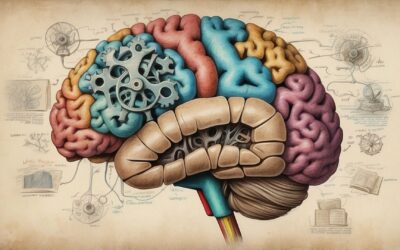Imagine a classroom where every student has access to the latest information at their fingertips, where learning is interactive, engaging, and tailored to individual needs. This vision is becoming a reality as we transition from traditional textbooks to digital learning resources. The future of textbooks in a digital age holds immense potential, but it also presents challenges that we must address to ensure equitable and effective education for all.
The Evolution of Textbooks
Textbooks have been a cornerstone of education for centuries, providing structured knowledge and consistent information. However, as technology advances, the way we access and interact with information is transforming. Digital textbooks and online learning platforms are becoming increasingly prevalent, offering dynamic and interactive content that traditional textbooks cannot match.
- Accessibility and Convenience: Digital textbooks can be accessed anytime, anywhere, reducing the need for heavy physical books and making learning more convenient. This is particularly beneficial for students in remote areas who may not have easy access to physical textbooks.
Real-life example: During the COVID-19 pandemic, many schools switched to online learning. Digital textbooks became essential for continuing education despite the disruptions caused by the lockdowns.
- Up-to-Date Information: Unlike traditional textbooks, which can quickly become outdated, digital textbooks can be regularly updated with the latest information and research. This ensures that students have access to current and relevant content.
Real-life example: In subjects like science and technology, where new discoveries are made frequently, digital textbooks allow students to learn about the most recent advancements without waiting for new editions of physical books.
- Interactive Learning: Digital textbooks can incorporate multimedia elements such as videos, animations, and interactive quizzes, making learning more engaging and interactive. This can cater to different learning styles and help reinforce understanding.
Real-life example: A digital biology textbook might include 3D models of cells that students can manipulate, providing a more immersive learning experience than static images in a traditional textbook.
Challenges of Digital Textbooks
While the shift to digital textbooks offers many advantages, it also presents several challenges that we must address to ensure that all students benefit from this transition.
- Digital Divide: Not all students have access to the necessary technology and internet connectivity required for digital learning. This digital divide can exacerbate educational inequalities, leaving some students at a disadvantage.
Real-life example: In rural and low-income areas, students may not have access to computers or reliable internet, making it difficult for them to use digital textbooks and participate in online learning.
- Screen Fatigue: Prolonged use of digital devices can lead to screen fatigue, which can affect students’ health and concentration. Balancing digital and non-digital learning methods is crucial to avoid negative impacts on students’ well-being.
Real-life example: Students who spend long hours studying on computers or tablets may experience eye strain, headaches, and reduced attention spans.
- Teacher Training: Effective use of digital textbooks requires teachers to be proficient with the technology and comfortable integrating it into their teaching methods. Providing adequate training and support for teachers is essential for a smooth transition.
Real-life example: Professional development programs that equip teachers with the skills to use digital tools effectively can enhance the learning experience for students.
The Importance of Understanding the Shift
Understanding the shift from traditional to digital textbooks is crucial for educators, students, and parents. It represents a broader change in how we approach education and highlights the need for adaptability and continuous learning.
- Adapting to Change: Embracing digital textbooks requires a willingness to adapt to new technologies and teaching methods. This adaptability is a valuable skill in an ever-changing world and prepares students for future challenges.
Real-life example: Businesses increasingly rely on digital tools and remote work. Familiarity with digital learning platforms can give students a head start in navigating these technologies in their future careers.
- Promoting Digital Literacy: Digital literacy is essential in today’s digital age. Using digital textbooks helps students develop critical skills such as navigating online resources, evaluating information credibility, and using digital tools effectively.
Real-life example: Assignments that require students to research online, create digital presentations, or collaborate on cloud-based platforms help build essential digital literacy skills.
- Enhancing Engagement: Interactive and multimedia-rich digital textbooks can make learning more engaging and enjoyable. This can foster a love for learning and encourage students to explore subjects in greater depth.
Real-life example: Gamified learning elements in digital textbooks, such as earning badges or points for completing quizzes, can motivate students and make learning fun.
Take Action: Embracing the Future of Education
As we move towards a digital future in education, it’s essential to embrace the opportunities while addressing the challenges. Here are some steps you can take to make the most of this transition:
- Support Digital Access: Advocate for policies and programs that ensure all students have access to the necessary technology and internet connectivity. Support initiatives that provide devices and affordable internet to underserved communities.
- Promote Digital Literacy: Encourage digital literacy by integrating digital tools and resources into your learning or teaching routine. Explore online courses, tutorials, and workshops to enhance your digital skills.
- Balance Digital and Traditional Learning: Find a balance between digital and traditional learning methods to avoid screen fatigue and promote well-rounded education. Incorporate physical books, hands-on activities, and outdoor learning to complement digital resources.
- Stay Informed and Adaptable: Keep up with the latest developments in educational technology and be open to adapting your learning or teaching methods. Join educational forums, attend webinars, and engage with the educational community to stay informed.
By understanding the future of textbooks in a digital age and taking proactive steps to embrace this change, we can ensure that education remains effective, equitable, and engaging. Let’s work together to create a learning environment that harnesses the power of technology while preserving the essence of quality education.












0 Comments